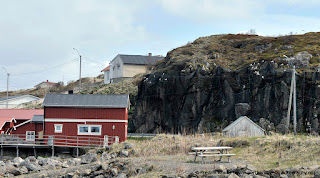Humpback Whale - Feeding Frenzy
In the past, I have always pointed my camera towards almost anything in nature, but during the last two years, when I have started to realise that my photography is about to turn from a hobby into a job, I have found myself concentrating mainly on the two topics that fascinate me the most: 1) Marine Ecology and 2) Aurora Photography and Astronomy.
Firstly - Humpback Whales, my job as a marine biologist has got much closer to my photography, mainly through my work to establish a Photo-Identification Catalogue on Humpback Whales in Norway and the camera is now an important tool in my work. I wish to thank all of you that have contributed to the research-catalogue by sending in your fluke-photos of humpbacks to the data-base at norwayhumpbacks@gmail.com
The data-collection has already yielded some very interesting re-sightings of humpbacks and I will continue this work in 2013 together with research institutes around the world. Below is a short video showing some of the field-work in 2012:
Data-collection for the North Norwegian Humpback Whale Catalogue
Secondly, my photography (being mainly focused on Auroras and night-time photography), has turned from a hobby into what might turn out to be a job, or at least more than a hobby. During the autumn, I found myself realising a project that I have had in my mind for a long time and teamed up with the solar phycisist Pål Brekke and wrote a popular science book on northern lights. During the long hours of writing I found myself digging more deeply into the physics behind this and many other astronomical phenomena and my old astronomy-interest has taken a new turn.
The book "Northern Lights - A Guide" will be released on 23 January 2013 at a media press-release in Oslo on 23-24 January.
Link to English version: Northern Lights - A Guide
Link til norsk versjon: Nordlyset - En Guide
The old astronomy-interest has also led me to accept to give the opening talk of the 75-year Anniversary Conference of the Norwegian Astronomical Society (NAS) in Tromsø 1-3 March 2013, for which I am honoured. In this talk, I will try to share my experience as an aurora photographer and come with tips for anyone wanting to photograph this phenomenon and explain more about what actually causes the auroras and how it is possible to predict when and where strong northern lights are most likely to occur.
2013 is likely to be one of the better years for aurora-watchers in a long time
All in all, it looks like 2013 will be a year full of interesting astronomy events for night-time photographers, and one of my other greatest fascinations, comets, seem likely to put up a spectacualar show during 2013, but more about that later.
2013 is also predicted to be a year full of spectacular northern lights due to the peak in solar activity!













.jpg)









































